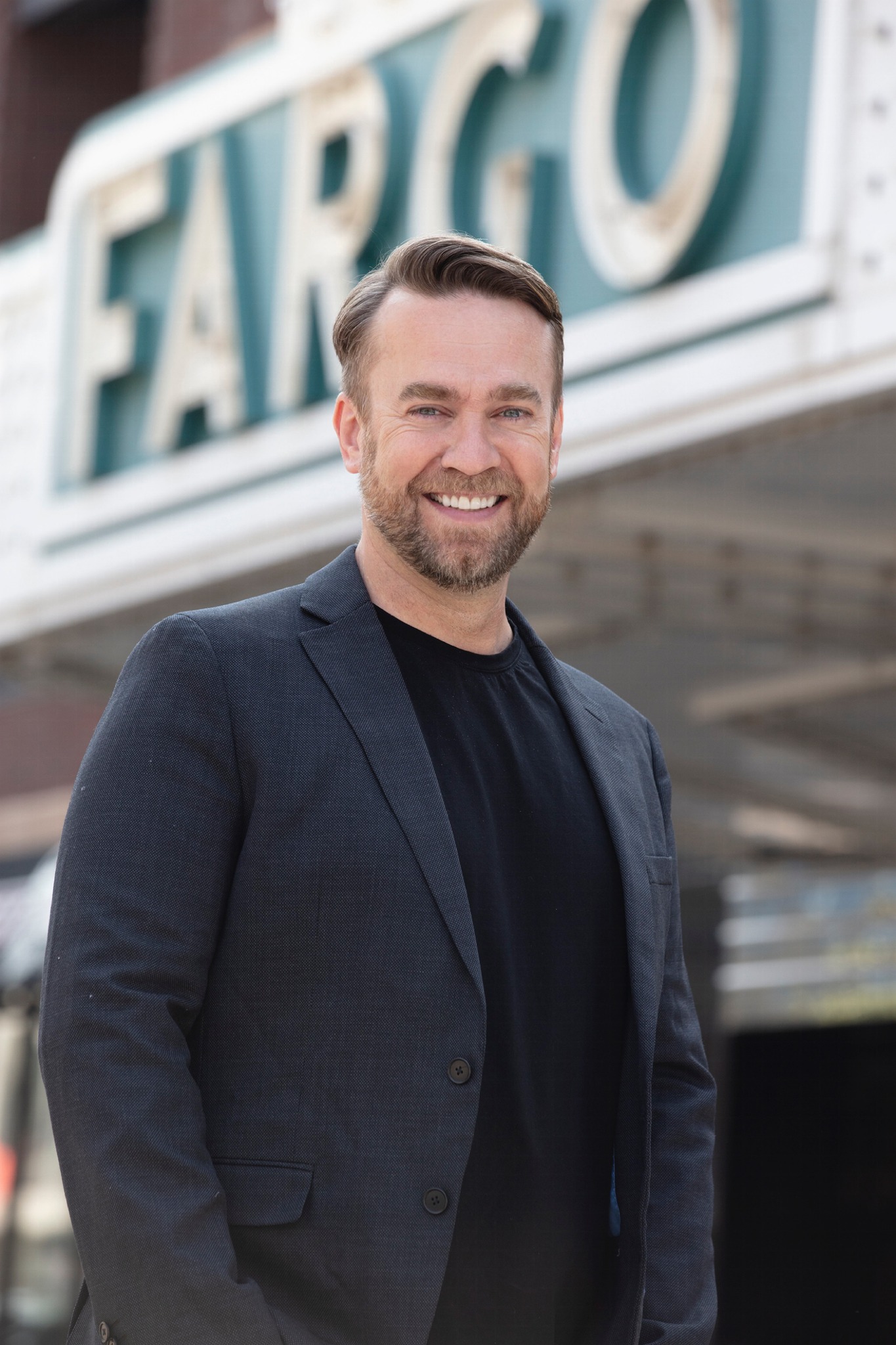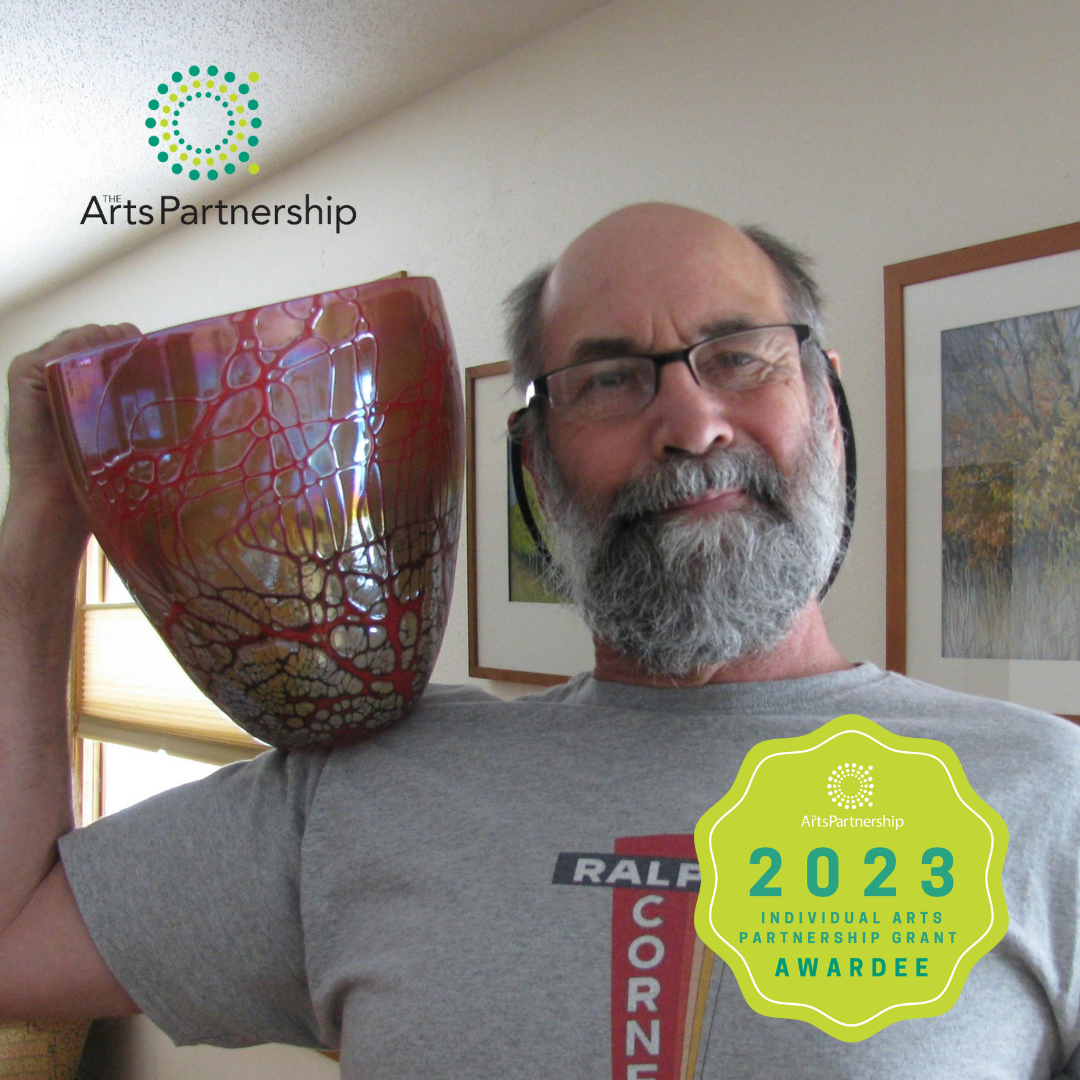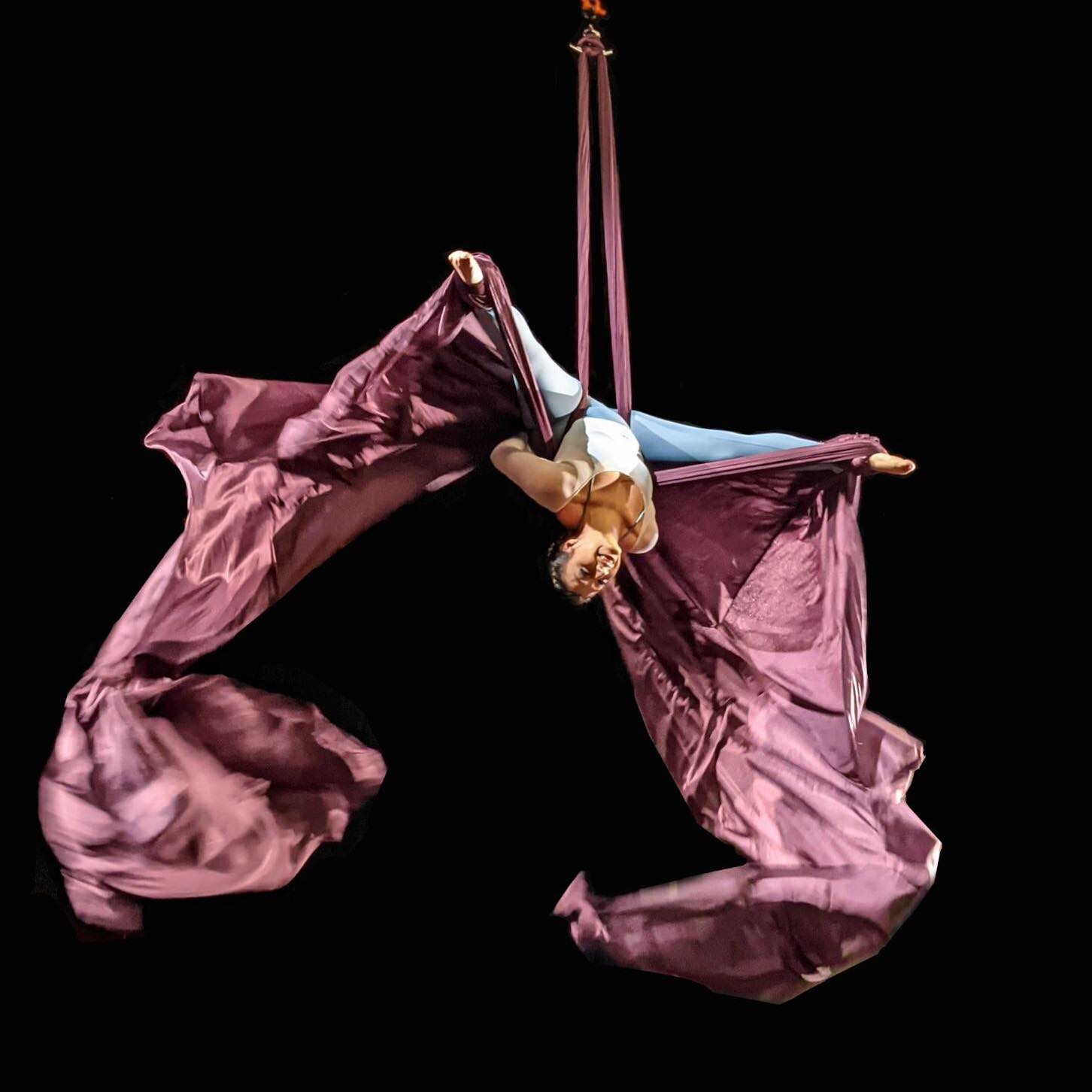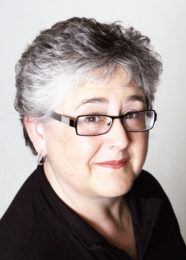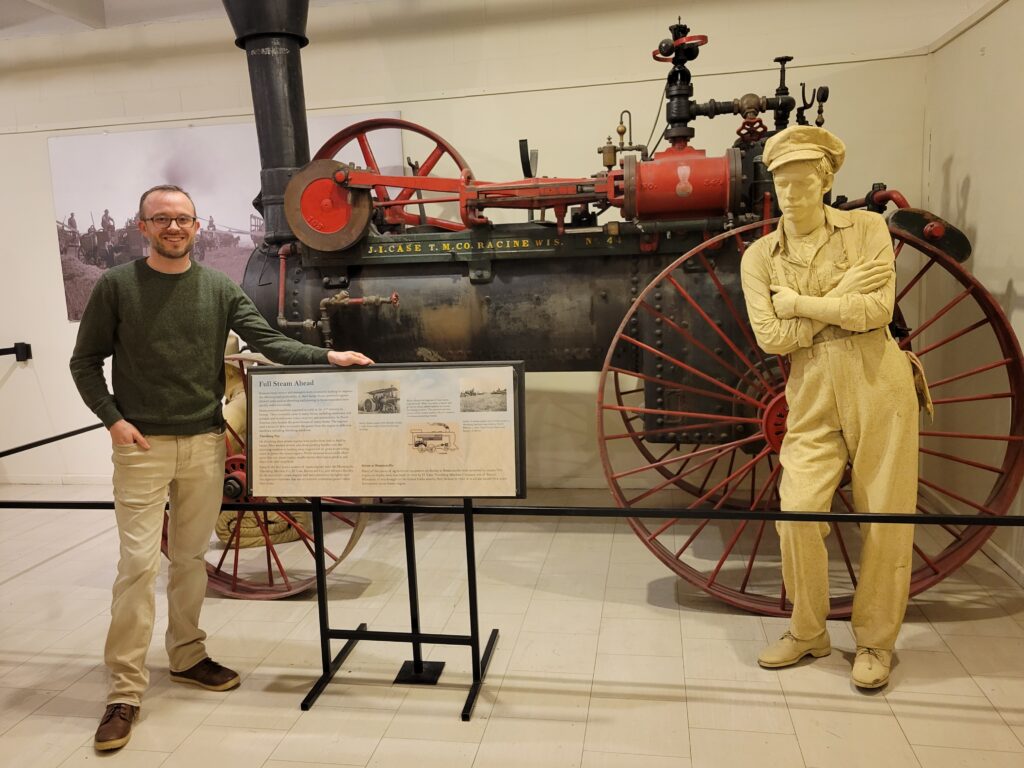
Bonanzaville Cass County Historical Society Curator David Hubin stands next to a steam-powered tractor inside an exhibit focused on bonanza farming, which paved the way for modern corporate farming practices. Hubin plans to shift and reorganize permanent exhibits in a way that focuses on storytelling and enhancing the visitor experience. Contributed photo/The Arts Partnership
It’s the off-season at Bonanzaville Cass County Historical Society in West Fargo. The lights are dimmed in the welcome area where museum-branded hoodies and coffee mugs are on sale, and a guest book lies open and unsigned until the museum opens its doors again in a few weeks.
Exhibits also lie dormant. Down the hall from a large display depicting a glimpse into the history of Indigenous cultures in Cass County, a steam-powered tractor stands stoically in a room showcasing field implements and farmhouse cutlery from bonanza farming days on the prairie.
The society’s new curator, archaeologist David Hubin, points to a chart on the wall outlining the industrialized structure of bonanza farms and explains to me how it laid the foundation for modern corporate agriculture, and how he’s looking forward to enhancing exhibits at the museum through a mix of interactivity and storytelling.
“Art curation is beautiful and complicated. We want to tell a story, but we want to be true to history, as well,” he said. “In that way, and lots of others, we have a lot of really great plans for continuing our historical society’s mission.”
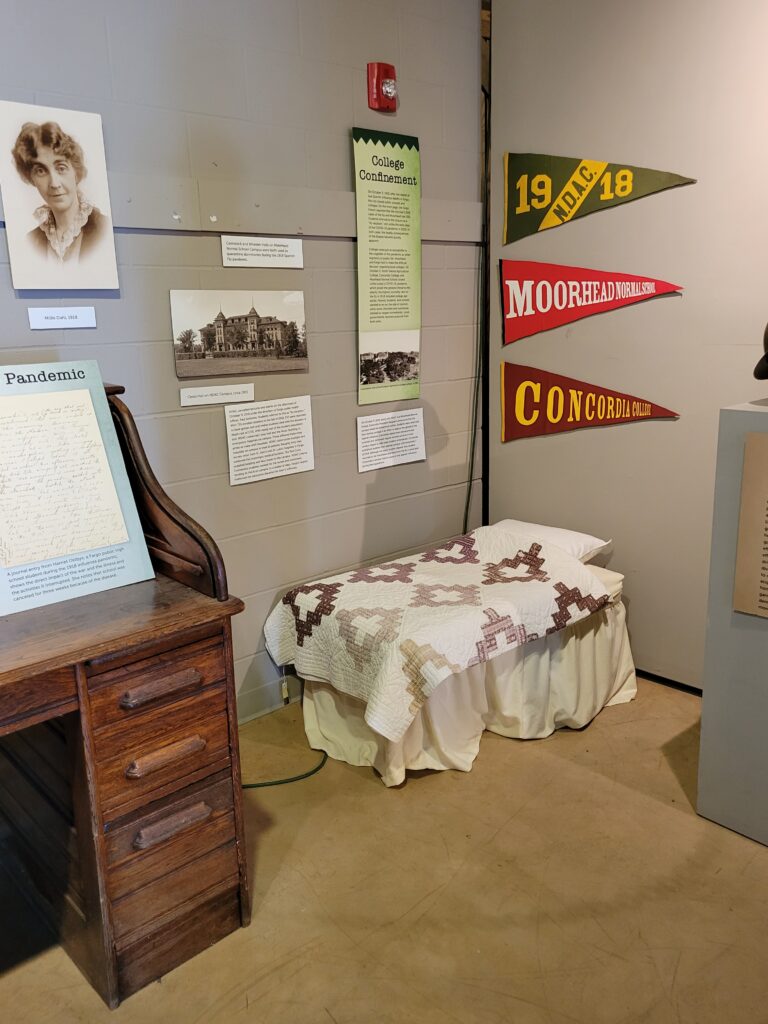
A children’s hospital bed is on display as part of a pandemic-themed exhibit that focuses on how the region managed the flu outbreak of 1918. Contributed photo/TheArts Partnership
A fresh vision
Hubin wants the future of Bonanzaville to be more interactive, rather than what some might consider a catch-all drawer for local artifacts of interest.
“It should be a place where visitors read, watch, listen and do,” he said. “It’s important for us to create interactivity and adapt exhibits to everyone’s preferred learning styles.”
Until Hubin stepped in last November, Bonanzaville operated without a curator since 2016 and has largely operated on a crew of dedicated board members and volunteers. Because of this, budget limitations, as well as the COVID-19 pandemic, collections were organized rather higgledy-piggledy.
“We spent seven years without a full-time curator, which is pretty unheard of for a collection like ours with roughly 400,000 artifacts and 41 historic and replica buildings,” Beth Jansen, executive director of Bonanzaville since 2020, said.
Now, with Jansen and Hubin on board, the future of West Fargo’s most iconic tourist destination is being reimagined.
“There’s a lot going on here,” Hubin said. “There’s a lot of work to do, and we’re so thankful for the volunteers and others in the community who have worked so hard to keep everything together as best as they’ve been able.”
Bonanzaville welcomes visitors seasonally to the Pioneer Village. Throughout the year, it hosts live theatre performances, craft fairs, vendor showcases, and holiday events and parades. Facilities can also be rented out for special events such as corporate parties and weddings.
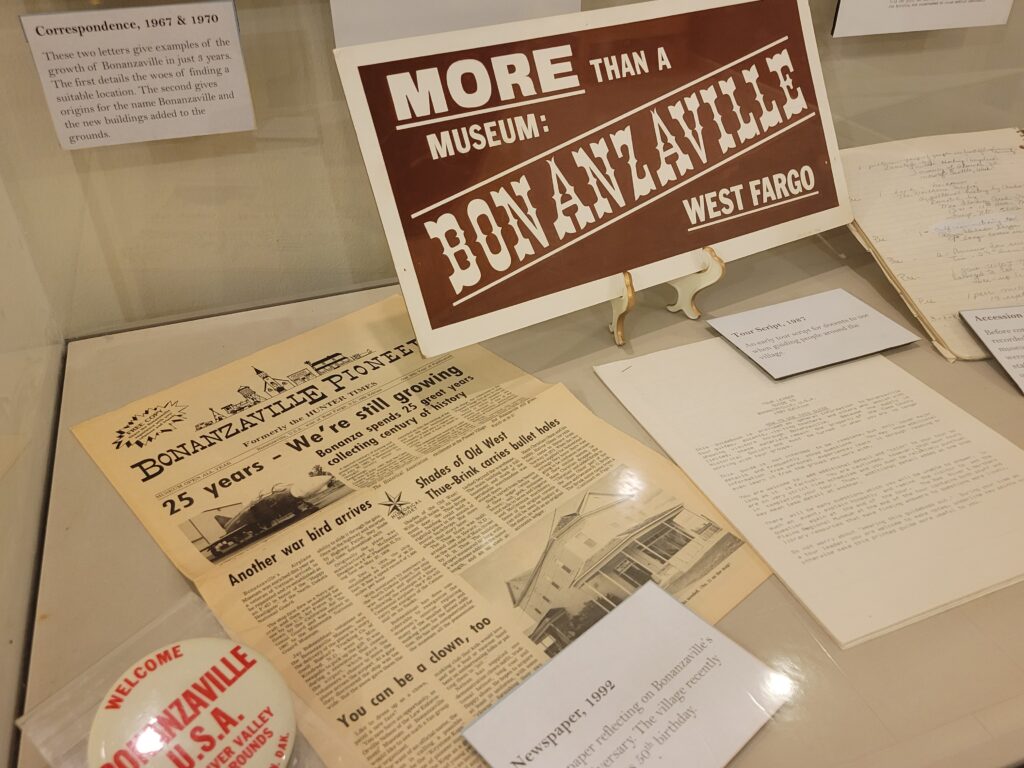
A Bonanzaville Cass County Historical Society display case holds newspaper archives, event buttons and early correspondence at the museum and event center. Contributed photo/The Arts Partnership
Digging up the past: a ‘gatekeeper of community and history’
Hubin, 38, boasts an impressive CV of academic experience in anthropology and archaeology, including digging cemeteries in Ohio, working on monasteries in Tuscany, Italy, and preserving artifacts in the Adirondack Mountains. He hails from Columbus, Ohio, and moved to the area in 2018 when his wife Katie got a job at NDSU.
Hubin places unwavering trust in Jansen’s vision for Bonanzaville, which tends to focus on improving visitor experience and community engagement while maintaining what makes the historical society so unique—the region’s passion for local history and the volunteers and community members willing to continue the legacy.
“I want people who visit the museum to walk away with meaning and narrative to what they’ve experienced,” he said. “Our staff is extremely energized about our mission, with a board that fully supports a broader focus on the historical society being the gatekeeper of community and history here at Bonanzaville.”
“David was our only anthropology professional to apply for the curator job, and he’s exceptional in his desire to showcase public history, and his experience with artifacts themselves and understanding of what we do here,” Jansen said. “David brings to the table an ability to look at the artifacts and apply it to the human experience. The human relevance.”
When the opportunity to work for Bonanzaville as a curator came up, Hubin felt it was the perfect marriage between his background in cultural preservation and a love of art.
“For me, what lives within the walls of each of the buildings at Bonanzaville are stories that need to be told,” he said. “And I’d like to do that by looking at the art we have through the lens of our culture.”
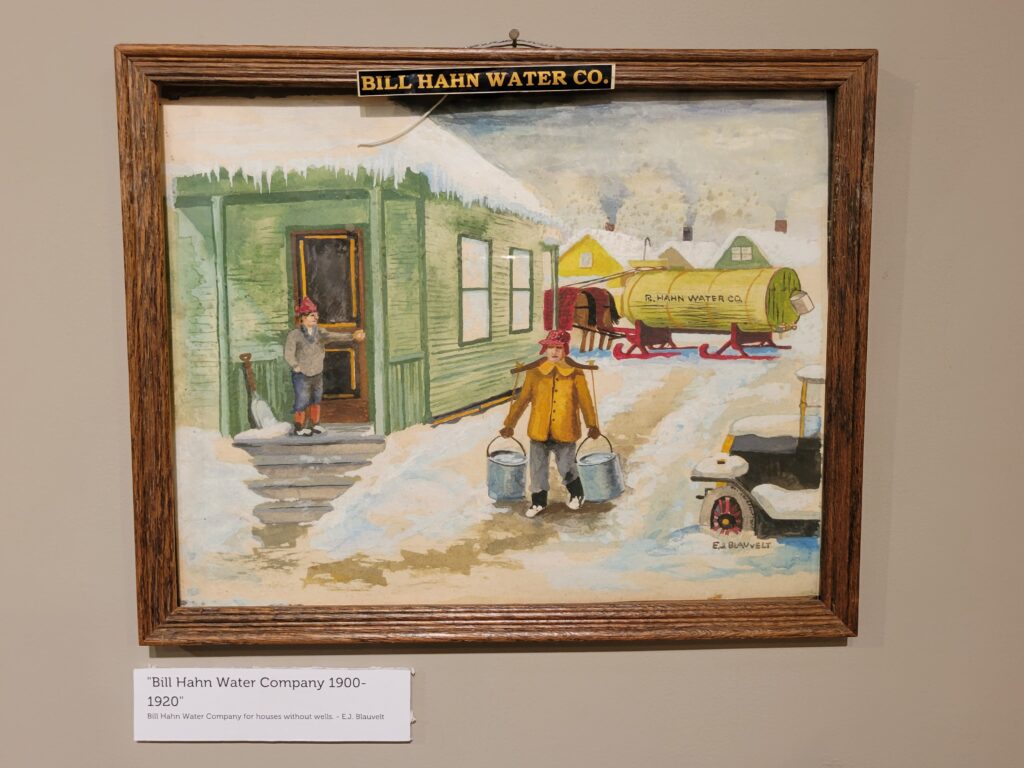
A painting by prominent midwestern artist Everett James Blauvelt, “Bill Hahn Water Company 1900-1920.” The exhibit showcases many of Blauvelt’s paintings and represents the community’s longstanding commitment to supporting local art. Contributed photo/The Arts Partnership
Cross-cultural collaborations: reimagining the permanent collections
Permanent exhibits will focus on three core elements of history in Cass County. The first will capture Indigenous history with an emphasis on collaborating with the region’s Native culture bearers.
“As the county’s historical society, we have a responsibility to address the true extent of history in the region well before the days of Euro-American pioneers,” Hubin said.
In doing so, he intends to collaborate with Indigenous communities for their active input and participation in the permanent collection. “The reinterpretation will take place as real, impactful relationships are built,” he said.
“Founding Fargo” is the second permanent exhibit set to be reconfigured for the 2024 season and will act as a time bridge between the Indigenous area of the museum and into more modern times.
“As the name Founding Fargo suggests, this exhibit will explore the conditions that set the stage for the Euro-American settlement(s) that turned into Fargo, Moorhead and West Fargo,” Hubin said.
Exhibits will showcase cultural artifacts from early exploration to fur trading to railroads and the towns and cities that popped up everywhere as a result of bonanza farming. This will also make room for the catch-all artifacts in a rotating feature section called “Fargo’s Firsts,” which “could span anything from personal biographies to arts, business, ag, and social movements,” Hubin added.
Rounding out the permanent exhibits will be a focus on the museum’s namesake phenomenon: bonanza farming.
“Bonanza farming both reflected the cultural context of the 1870s and affected the historical trajectory of the region from then to now,” Hubin said. “This exhibit will (re)introduce visitors to what a bonanza farm is while reinterpreting the phenomena in terms of the technology/industries, economy, landscape, and social structures that were part and parcel of this change.”
Moving objects: creating interactivity and emotion
As for sifting through the hundreds of thousands of artifacts, Hubin said, “That’s the name of the game, I suppose. It’s a lifetime of work. You go through a collection and you go through it again. It’s preservation and care.”
Slow and steady wins the race, in this case, and it’s a job Hubin is ready to take on. “To be in the museum world now where I can immerse myself in these objects is really moving to me. And to be able to create a really great visitor experience where people leave and they’ve learned something and also connected emotionally, that’s going to be great.”
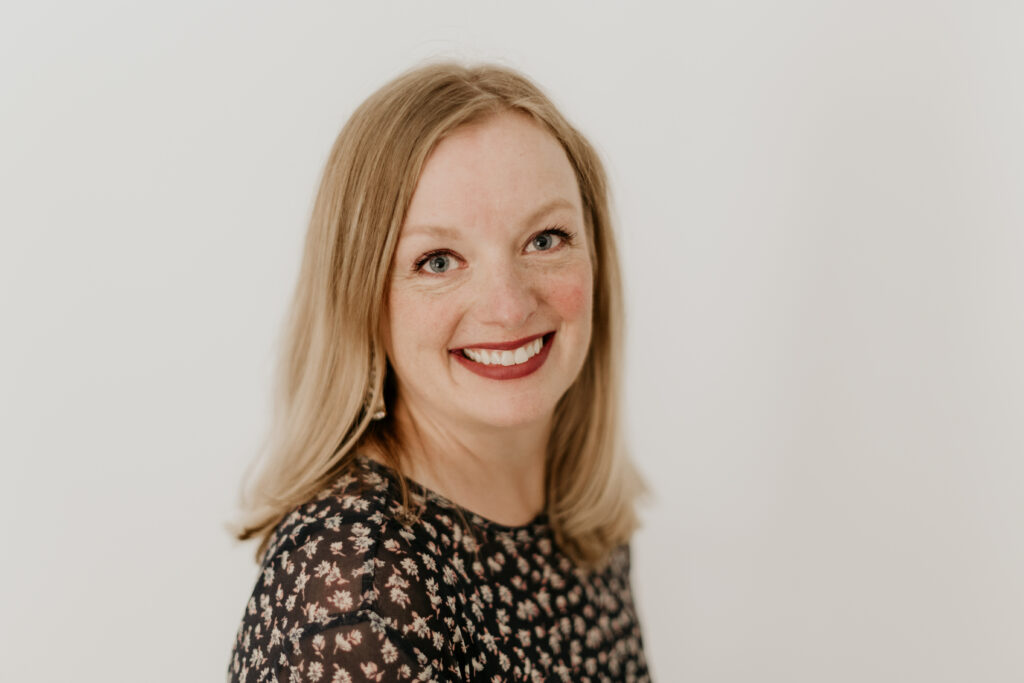
About the author
Lonna Whiting is a freelance writer and owner of lonna.co, a content marketing and communications agency located in Fargo, North Dakota. She is a frequent contributor to The Arts Partnership’s content library and also provides strategic communications consultation to the organization.

